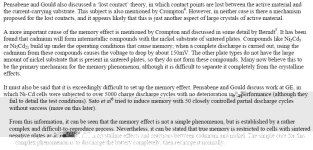Parker
10 W
Nicads are looked good to me right now. What I read on ebike.ca got me looking in to them.
I'm on SLA's now and am not ready to spring for lithium yet tho pings ebay packs are a little tempting.
The weight of nicads is half of lead - 25% less capacity of NMHi. But the thing that really impresses me is
the number of cycles. 1000 vs 600 on NMhi. I also like that you can drain them down and not worry about it as
much. I read that the memory effect is not significant. Sorry I don't have links - don't remember what I read where. The toxic thing is not good but recycling happens and my purchase with not stop the move to lithium anyway.
So what is not to recommend about nickel as a good mid level battery?
I'm on SLA's now and am not ready to spring for lithium yet tho pings ebay packs are a little tempting.
The weight of nicads is half of lead - 25% less capacity of NMHi. But the thing that really impresses me is
the number of cycles. 1000 vs 600 on NMhi. I also like that you can drain them down and not worry about it as
much. I read that the memory effect is not significant. Sorry I don't have links - don't remember what I read where. The toxic thing is not good but recycling happens and my purchase with not stop the move to lithium anyway.
So what is not to recommend about nickel as a good mid level battery?



